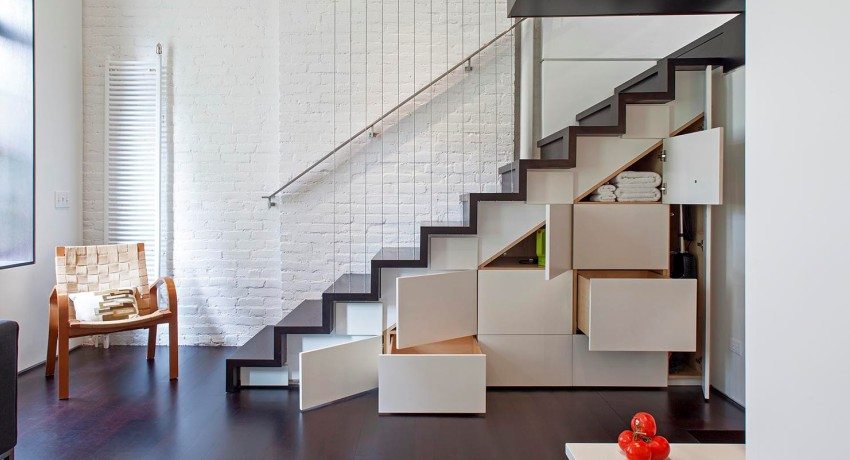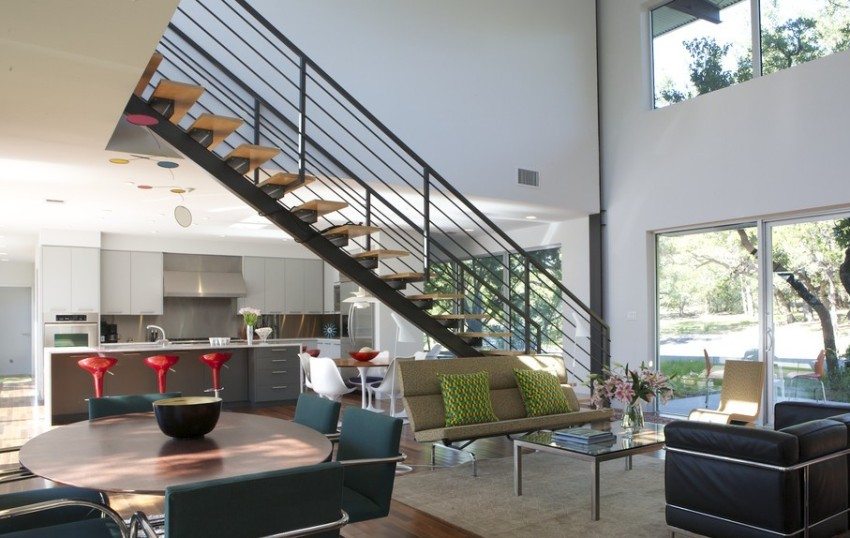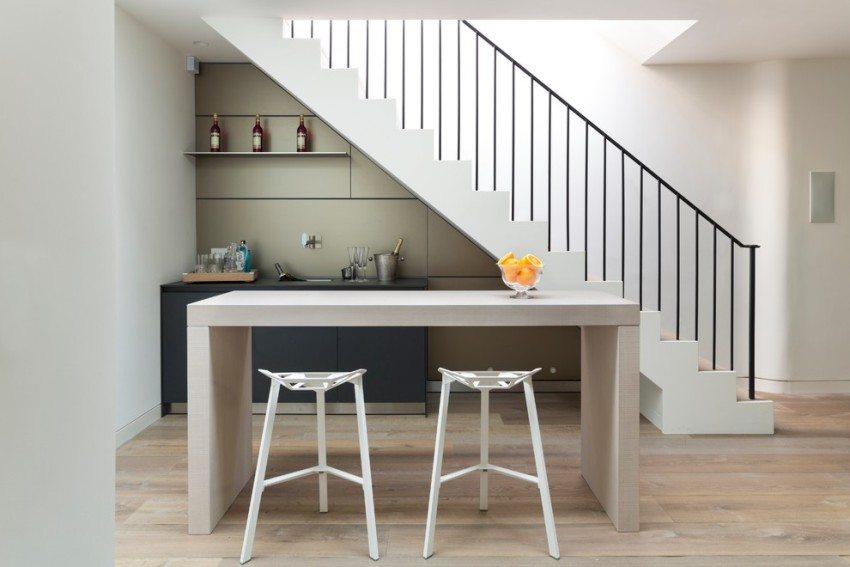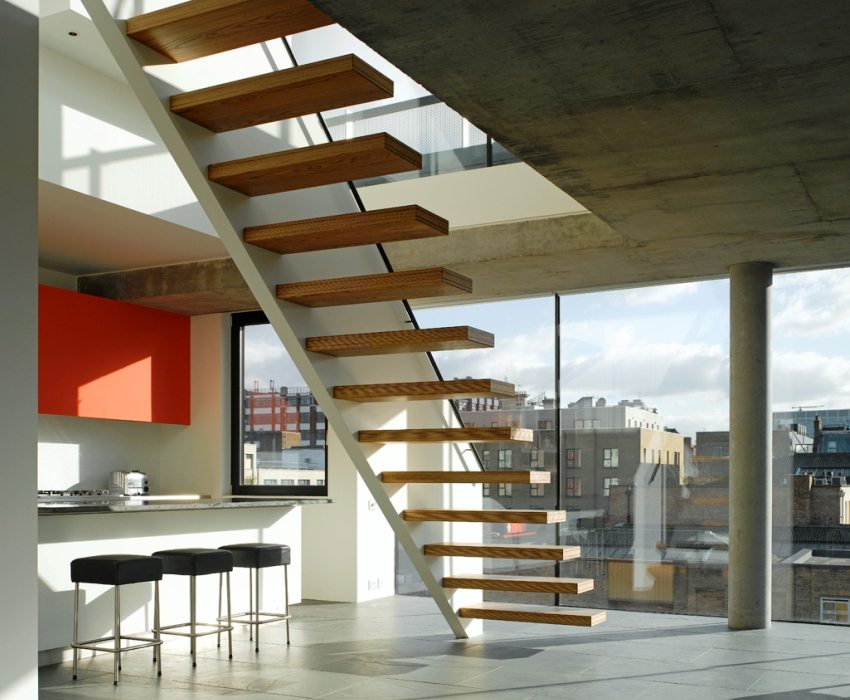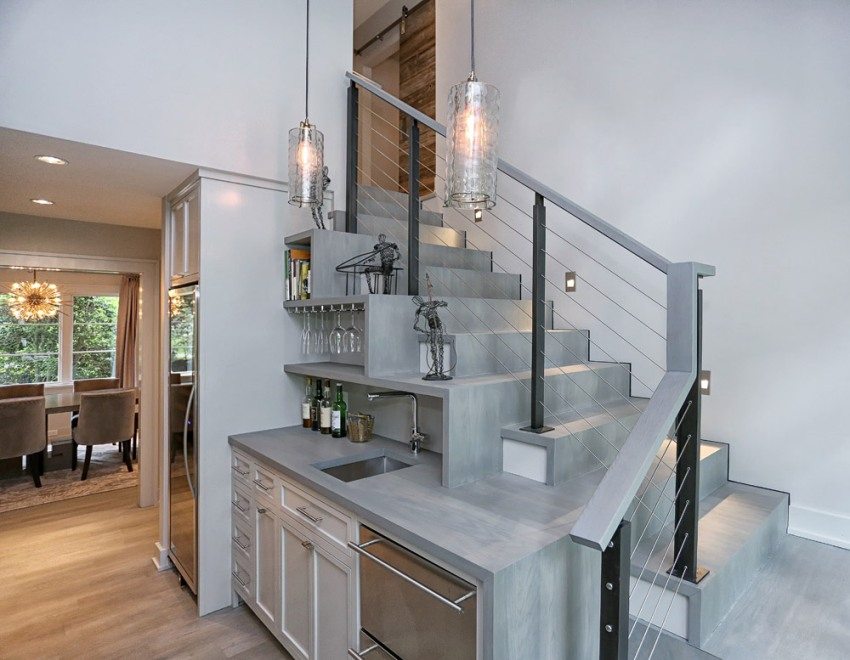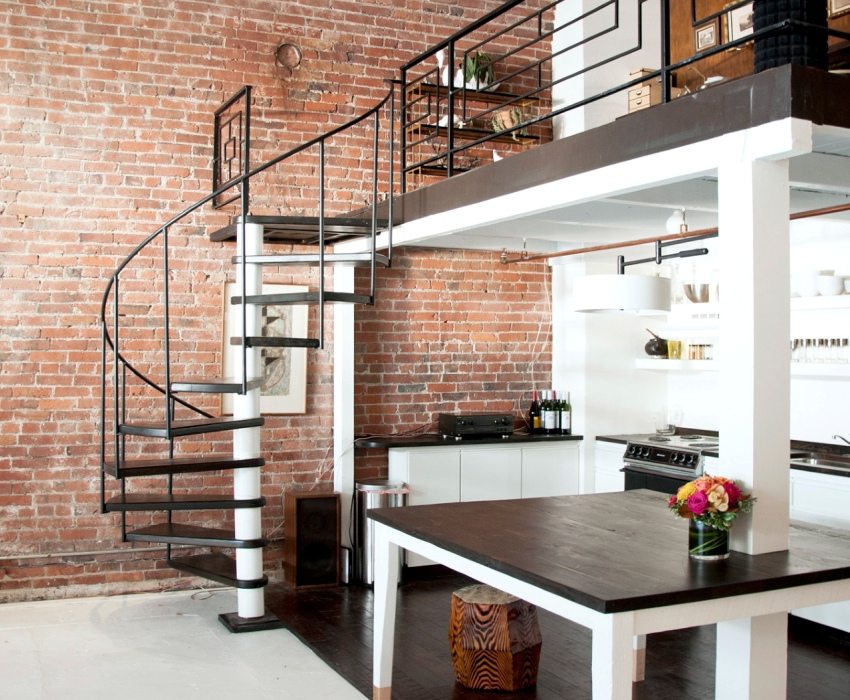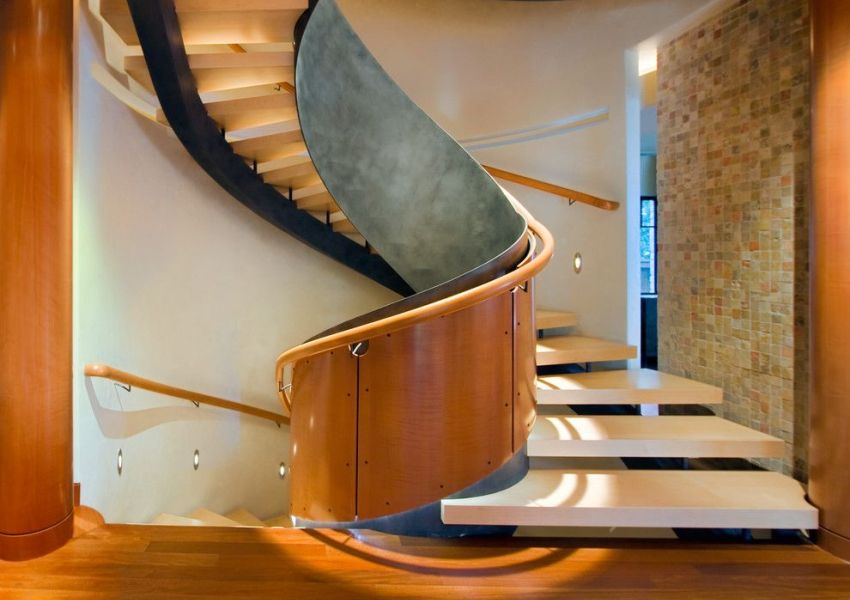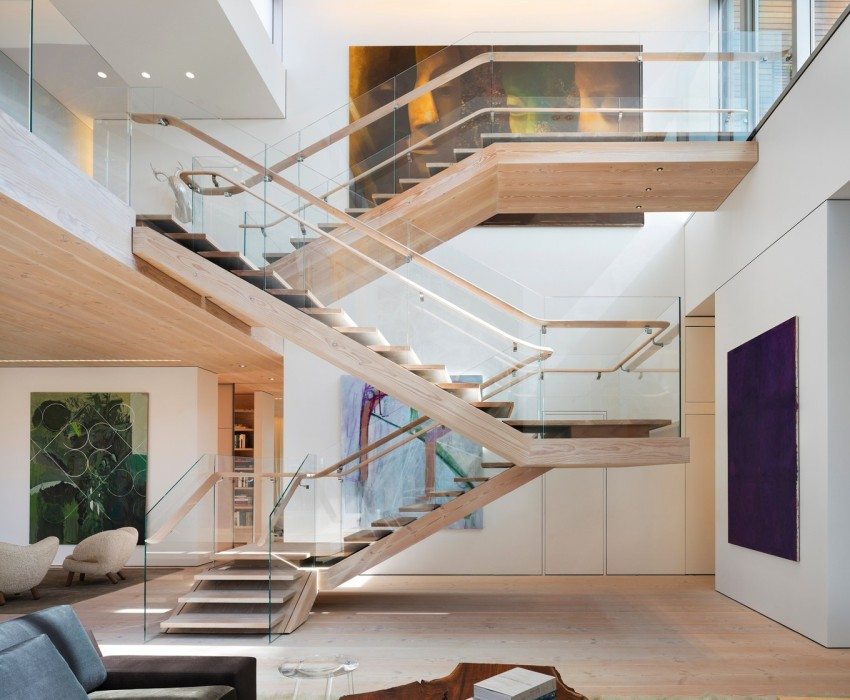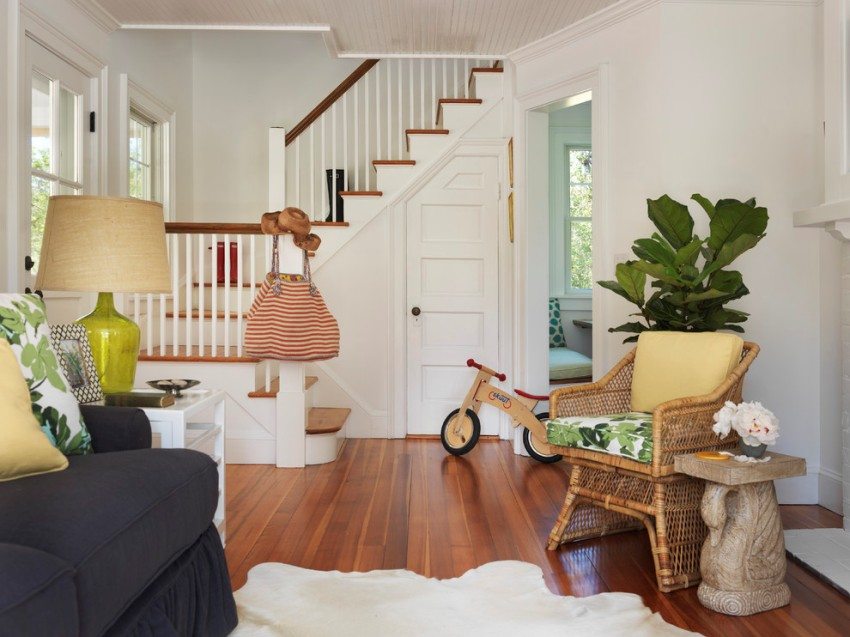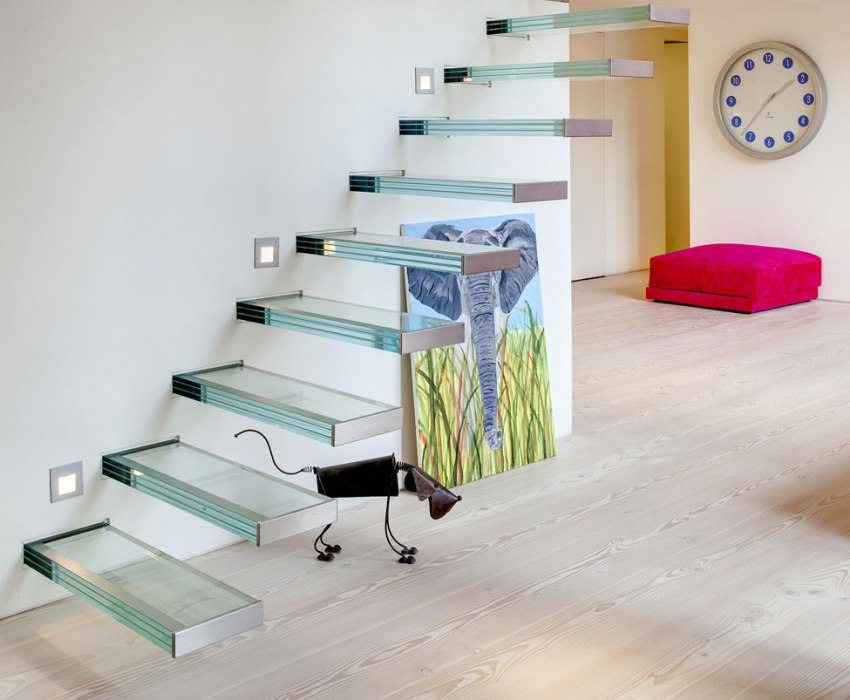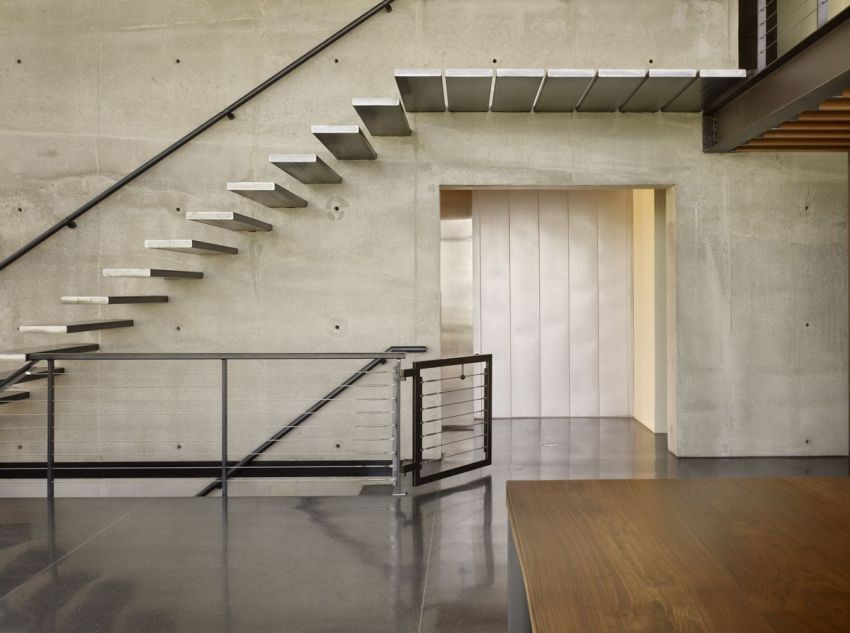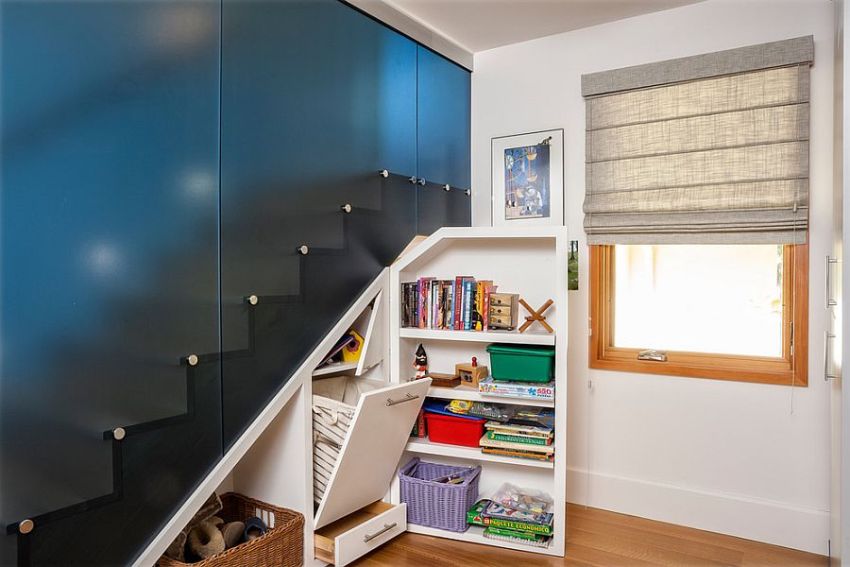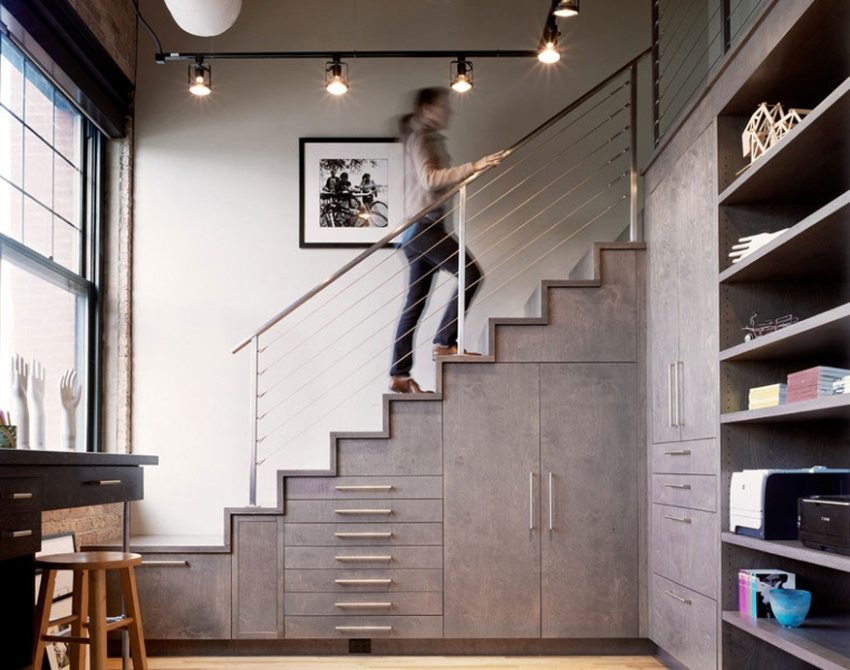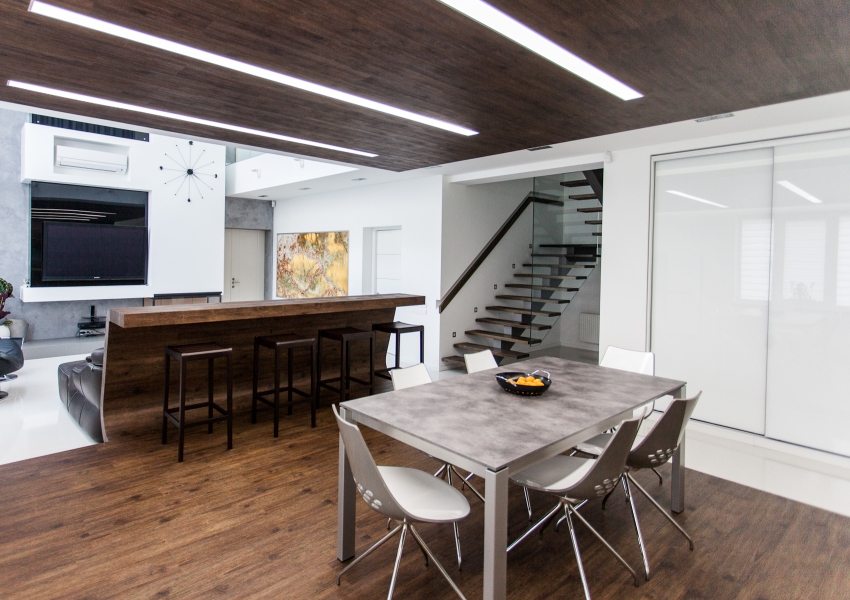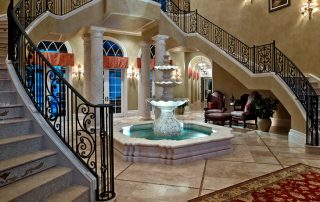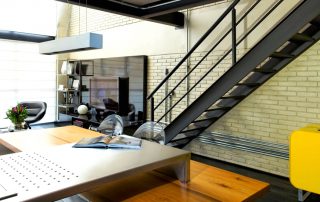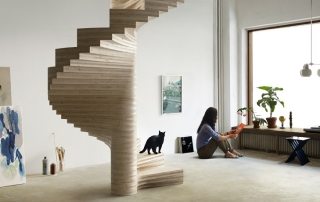The stairs in the house to the second floor, photos of which decorate the pages of thematic sites, are not just a necessity, but attractiveness and beauty. Such stairs there are different types, our choice of which depends on the area of the room and its design, the wishes of the homeowners. It is possible to install structures from a variety of materials. This article is intended to give an idea about the types of staircase structures, their constituent parts and about those safety requirements that must be taken into account when building stairs to the second floor with your own hands.
Content [Hide]
List of the main elements of the stairs
The most significant details of each stairs between floors are their steps and supports on which they are held. The beams that support the steps from the sides and bottom are called bowstrings. The same beams that only hold the steps from below are called kosoura. If there are three kosour, then the middle one will be called intermediate.
The steps themselves consist of the so-called tread (this is the horizontal surface on which the person's foot steps) and the riser (vertical part). In the design of some stairs, risers may be absent altogether.
Bolts and racks act as supporting elements. The first ones are special bolts mounted in the wall. The steps of the stairs are attached to them. The stand is the main supporting element for any spiral staircase.
Assembled into a single structural structure, steps with beams are flights of stairs. It is designed to rise from a lower level to a higher one. If more than one flight is provided for in the construction of the stairs, then a platform is arranged between them, which serves to transition between flights directed in different directions.
Important and significant details of the stairs are railingsalthough they are not always applied. The same applies to handrails, fences, trim and trim parts. Sometimes there are additional parts of fences in the form of steel rods and posts. The railings have baluster supports. They are called vertical stair elements, which are not only railing posts, but also decorations.
Stairs in the house to the second floor, photos of various types and their features
There is a very extensive classification of stairs, taking into account their purpose, functionality, position, layout, way of functioning, construction and material.For the purposes of this article, we do not need to consider in detail all the classifying characteristics. We only note that all home stairs can be divided into the following independent types:
- Spiral or screw.
- Consisting of one or more marches.
- Ladders installed on the bolts.
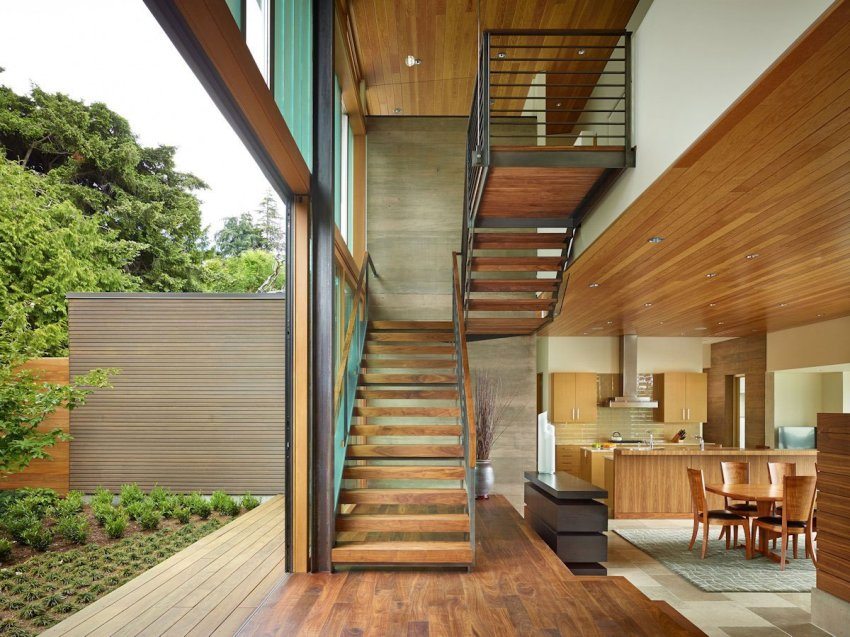
When building a house, it is important to correctly calculate the size of the stairs to the second floor
We will consider these types in more detail in order to better imagine the technology of installing stairs to the second floor with our own hands.
The device and features of the spiral staircase
Spiral staircases it is customary to build in small rooms where it is impossible to place straight flights of stairs. To determine the amount of space needed to build a staircase, you need to do some calculations. You just need to know the dimensions of the stair steps. Typically, the average length of steps for spiral staircases is in the range from 50 to 100 cm. Multiplying the length of the step by 2, we obtain the required circle diameter that is required to install the spiral staircase structure. The convenience of such stairs leaves much to be desired, but they can be successfully placed in a very small area. Probably, they should not be installed as the main ones, but as auxiliary ones in the attic or in the basement they will come in handy.
The material for spiral staircases is wood or metal... Wedge-shaped steps are attached around the center post or post. Most often, the racks are made from a metal pipe. The steps are attached to it with a narrow part. Their wide side is adjacent to the wall or balusters.
Useful advice!Spiral staircases with the most convenient parameters of steps are the following: the width of the central part is 20 -25 cm, and the widest is 40 cm. A staircase with a diameter of less than 1.5 m should not be made, as its use will be too inconvenient and dangerous.
Marching types of stairs and their advantages
This design is the most common. It takes into account the laws of biomechanics of movements, so descent and ascent is very convenient. However, marching stairs in the house to the second floor, the photos of which are most common, require a sufficiently large area for their construction. You can calculate it as follows: you need to measure the height of the wall, near which the stairs will be installed, and the length of the floor. After that, a right-angled triangle is drawn. In it, the wall and floor will be legs, and the future staircase will be hypotenuse. The floor length parameters must be chosen so that the angle of rise is 45 degrees. We also know from the physics course that this is the optimal angle for any movement. The width of the flight staircase can be made whatever.
Useful advice! When constructing a flight staircase, it should be borne in mind that in the correct flight of stairs there are from 3 to 15 steps, and more often 10 to 11. When this is not enough for a convenient rise to the required height, then I arrange a platform on which the second flight is mounted.
Ladders fixed to the bolts
A bolt is a fastener, like a bolt or a long post, to which a ladder is attached. The bolts are screwed into the wall and the steps are attached to them. Sometimes graceful and weightless staircase structures are created in this way. Their steps seem to just float in the air. For this, bolts are made in the form of long and strong pins. They are also fixed to the wall, but due to their strength they do not have any support from the opposite side. The design seems to be unreliable, but in reality, each rung of such ladders may well carry up to 1 ton of load. Ladders, fixed on bolts, are not supplied with stringers or bowstrings, which makes them graceful even with railings.
Basic rules for building stairs to the second floor with your own hands
Any ladder can be bought ready-made, ordered according to your size, or even made yourself. It doesn't matter which option you chose, the main thing is to know the following rules:
- If you are still designing your house, contact the specialists to calculate the necessary parameters or calculate them yourself. Then you can design the opening of the required dimensions in advance.
- Be sure to decide on the type of stairs. If there is very little space, choose a screw, if enough, then a marching one. If you want to build an elegant and practical design, then stop at the bolts.
- The following dimensions of the opening are recommended: for a straight march, an opening of 1.2 x 3.7 m will be sufficient; with an L-shaped device - 3.1 x 1.3 m; for a U-shaped configuration - 2 x 2.5 m. If the staircase is ordinary spiral, then an opening of 2.2 x 2.2 m is needed for it; and if it performs an auxiliary function - 1.5 by 1.5 m.
- To ensure the safety of small children, the distance between adjacent fence balusters should be no more than 15 cm.
- Height of stair rails should not exceed 85 cm. Optimum width: 25 - 30 cm.
- The bearing capacity of the stairs for any residential buildings is not less than 300 kg / m2.

Wooden stairs with glass railings
- The steps should not be slippery. Moreover, their position inclined to the level of the horizon is completely unacceptable. The railing should be optimal for any height. First, the ladder is carefully fixed at the top or on the platform between two floors. The length of the entire staircase must exactly match the actual floor height. Upstairs, the railing is installed on reliable fasteners. The resulting staircase should have good strength, and the railings should be reliable and tight.
- The angle of climbing the stairs in the house to the second floor, the photo of which is most harmonious, does not happen more than 45 degrees. A range of 35-40 degrees is allowed. The width of the steps is at least 80 cm, the most optimal is from 90 to 120 cm.
Useful advice! You should not neglect the engineering requirements for the construction of the stairs for the sake of decorative elements. This can cause a lot of trouble.
Observing all the proposed rules, you can independently make or install a beautiful and safe staircase in the house to the second floor. You can then happily show your photos of your work to your old good friends.
